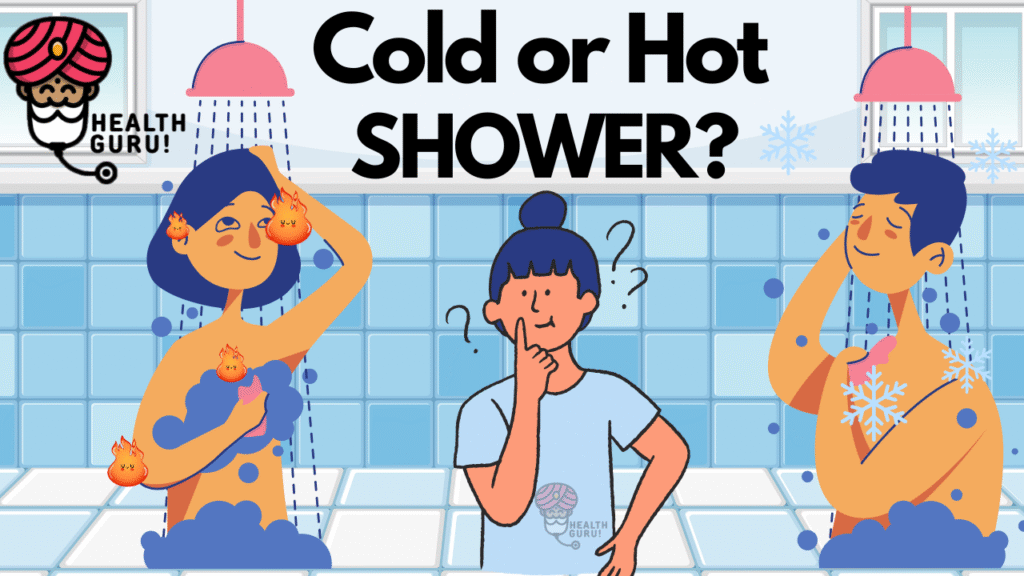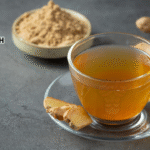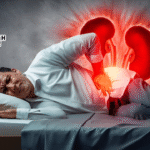Choosing between cold showers vs hot showers is more than just a personal preference. The shower temperature affects your body in surprising ways, from mood and energy to muscle recovery and sleep. While some people swear by a cold shower before bed for a sharp burst of energy and improved focus, others can’t resist the calming comfort of hot shower benefits to unwind after a long day.
Each temperature affects your thermoregulation, controls core body temperature, and influences blood circulation differently. This ultimate guide will help you discover which option is better for your health, wellness, and daily routine.

The Science of Temperature and Your Body
Your body is always working to maintain a steady internal temperature. This process is called thermoregulation. It balances heat production and heat loss to keep your core body temperature stable.
When you step into a hot or cold shower, it triggers different reactions in your body. A cold shower before bed can lower your core body temperature, while a hot shower does the opposite by causing peripheral vasodilation, which means your blood vessels expand to release heat.
These reactions also affect your sympathetic nervous system. Cold water can cause norepinephrine release, a hormone that increases alertness and energy. Hot water, on the other hand, helps relax muscles and encourages calm.
Top Benefits of Cold Showers
Cold showers are known for their refreshing effects. They help improve blood circulation because your body sends blood to your organs to stay warm. It also supports brown fat activation, which burns calories to generate heat.
A cold shower before bed can reduce stress by decreasing cortisol fluctuations, the stress hormone. Some studies suggest it can boost the immune system, improving your body’s ability to fight illness. Athletes also swear by cold showers for muscle soreness relief and faster muscle recovery.
| Benefits of Cold Showers | Explanation |
| Improves blood circulation | Pushes blood to vital organs |
| Promotes brown fat activation | Increases calorie burn |
| Reduces cortisol fluctuations | Lowers stress and anxiety |
| Speeds up muscle recovery | Reduces soreness and inflammation |
| Enhances immune system boost | Helps fight illness |
Key Advantages of Hot Showers
Hot showers bring a different set of perks. The biggest hot shower benefits include muscle relaxation and stress relief. Warm water calms the sympathetic nervous system, helping you unwind after a long day.
They also help reduce inflammation, soothe tight muscles, and ease joint pain. This makes hot showers an excellent option for people dealing with chronic pain or stiffness. A warm bath timing before bed can even improve sleep onset latency, which means you fall asleep faster.
Cold Showers vs Hot Showers for Skin and Hair Health
When it comes to beauty care, both hot and cold showers have effects. Hot showers can lead to skin irritation risk by stripping away natural oils, causing dryness and itchiness. Cold showers, however, tighten pores and keep skin firm.
For hair, cold water helps seal cuticles, making hair shinier and stronger. Hot water can weaken hair strands over time. If you’re concerned about shower temperature effects on skin and hair, experts recommend cooler showers.
| Factor | Cold Showers | Hot Showers |
|---|---|---|
| Pores | Tighten, reducing acne | Open, increasing clog risk |
| Hair Cuticles | Flatten for shine | Raise, causing frizz |
| Sebum Production | Preserves natural oils | Strips protective oils |
| Circulation | Temporary boost | Sustained improvement |
Cold water provides surprising benefits for skin and hair. It tightens pores, reduces puffiness, and helps hair retain moisture by sealing cuticles. Many reports reduced acne breakouts after switching to cooler showers. However, hot water has advantages too – it deeply cleanses pores and may help with conditions like psoriasis by improving blood flow to skin. The key is balance – alternating temperatures or using lukewarm water most days with occasional hot or cold sessions.
Recovery and Performance: Post-Workout Showers
After exercise, your muscles experience tiny tears. This is where a cold shower before bed comes in handy. It reduces inflammation and supports muscle recovery by lowering core body temperature quickly.
Athletes also use contrast hydrotherapy, alternating between hot and cold water, to enhance blood circulation and speed up recovery. This technique not only reduces pain but also improves overall physical performance.
Sleep Quality and Shower Temperature
A hot shower can improve sleep quality improvement by promoting peripheral vasodilation. It reduces your core body temperature after getting the shower, signaling your brain it’s bedtime.
On the flip side, a cold shower before bed might increase sleep onset latency in some people but improves sleep efficiency for others. It all depends on your personal circadian rhythm and how your body responds to temperature shifts.
Mental Health and Mood Regulation
Water temperature also affects your mood. Hot showers help with stress reduction by calming the sympathetic nervous system. They lower cortisol fluctuations, making you feel relaxed and at ease.
Cold showers trigger norepinephrine release, improving alertness and reducing symptoms of depression. This hormone boosts energy and sharpens focus, making cold showers a natural mood enhancer.
Risks, Contraindications & Safety Tips
While both options are safe for most, certain people should be cautious. Those with heart problems should avoid sudden temperature transition techniques. Cold showers before bed can be risky for people sensitive to cold, causing discomfort or raising blood pressure.
While generally safe for healthy individuals, both cold and hot showers carry potential risks that are often overlooked. Cold showers can cause dangerous spikes in blood pressure – one study recorded increases up to 180/120 mmHg in susceptible individuals. There’s also the hypothermia risk if core temperature drops too much, particularly in cooler environments or with prolonged exposure.
Hot showers present different dangers. Water above 120°F can cause first-degree burns in just 5 minutes. Those with cardiovascular conditions may experience dizziness or fainting from blood pressure drops. The steam can also trigger asthma attacks in some individuals. For skin health, daily hot showers are one of the leading causes of eczema flare-ups according to dermatological surveys. Moderation and proper hydration are key for safe temperature therapy.
Always keep optimal shower duration in mind. Too long in either temperature can harm your skin or affect your body’s natural thermoregulation. Experts recommend 5-10 minutes for cold showers and 10-15 minutes for hot showers.
Expert Recommendations & Best Practices
Experts suggest choosing your shower type based on the time of day and your body’s needs. In the morning, a cold shower boosts alertness through norepinephrine release. In the evening, a hot shower supports a healthy bedtime bathing routine by aiding peripheral vasodilation.
To get the most out of both, try contrast hydrotherapy. This practice uses hot and cold water together to improve blood circulation, reduce muscle soreness, and enhance immune modulation.
Creating Your Personalized Shower Routine
The “best time to shower before bed” depends on your aims. For sleep, aim for 60-90 minutes before bedtime with warm (not hot) water to allow proper cooling. Morning showers benefit most from brief cold exposure (30-60 seconds) to boost alertness. Your ideal routine might include warm showers most days with cold finishes when you need an energy boost.
Seasonal adjustments make sense too. In summer, cooler showers help regulate body temperature, while winter calls for warmer (but not scalding) showers. Pay attention to how your body responds – if you feel energized after cold showers but your neighbor feels exhausted, personalize accordingly. The “optimal bath temperature for sleep” typically falls between 100-104°F based on multiple sleep studies.
Conclusion: Which Shower Temperature is Best for You?
In the end, the battle of cold showers vs hot showers doesn’t have one clear winner. It’s all about what your body needs and how it responds. If you want a burst of energy, improved focus, and faster muscle recovery, a cold shower before bed or after a workout can be your best pick. It boosts blood circulation, encourages brown fat activation, and reduces cortisol fluctuations for a natural energy kick.
On the other side, if your goal is stress reduction, sleep quality improvement, or muscle relaxation, then the calming hot shower benefits are ideal, especially when included in your bedtime bathing routine. It lowers core body temperature through peripheral vasodilation after stepping out, helping your circadian rhythm signal it’s time for deep, restful sleep.
Cold showers vs hot showers, both have their unique place in a healthy lifestyle. Listen to your body, adjust your optimal shower duration, and don’t hesitate to try contrast hydrotherapy for the best of both worlds. And remember — sometimes the simplest change in your shower habits can lead to better sleep, improved mood, and stronger overall health.
Frequently Asked Questions
Taking a cold shower before bed, is it good for sleep?
It depends. It can lower your core body temperature, improving sleep efficiency for some people but delaying sleep for others due to circadian rhythm differences.
What are the top hot shower benefits?
Hot showers relax muscles, ease tension, and promote better sleep quality improvement. They also support stress reduction by calming the nervous system.
Does water temperature affect muscle recovery?
Yes. Cold water reduces inflammation and soreness while hot water soothes stiff muscles. Using both with contrast hydrotherapy improves blood circulation and recovery time.
How long should a shower last?
The optimal shower duration is 5-10 minutes for cold showers and 10-15 minutes for hot showers to avoid skin irritation risk and keep thermoregulation balanced.
Are there risks with sudden temperature changes?
Yes. Sudden shifts can trigger blood pressure lowering or spikes in sensitive individuals. Use gradual temperature transition techniques to stay safe.



